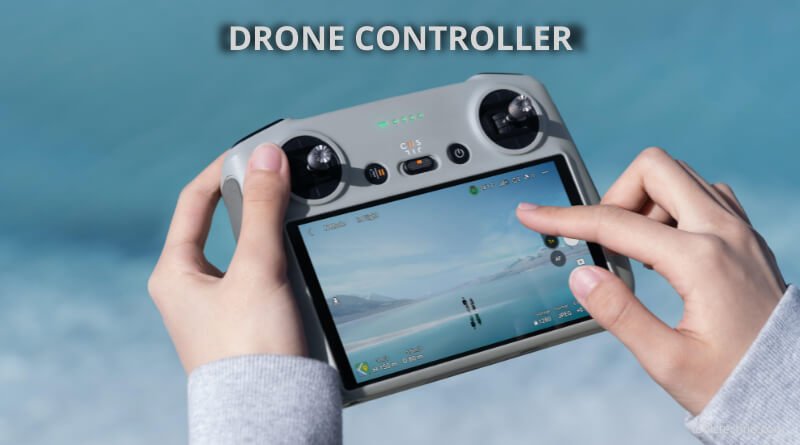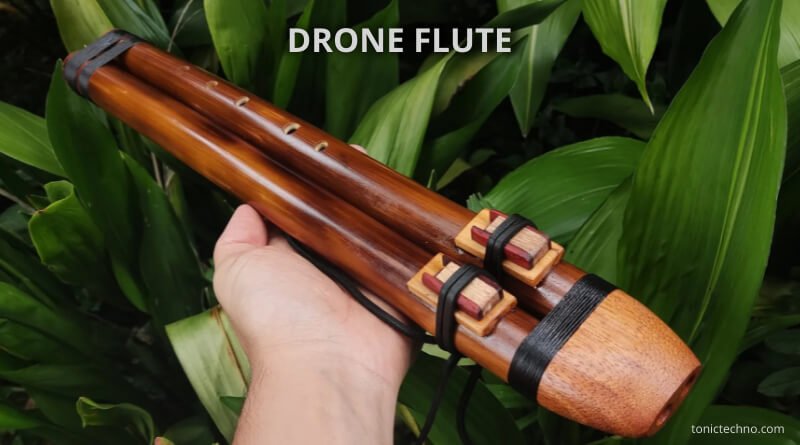Hey there, fellow drone enthusiasts! Today, let’s dive into the heart of every UAV operation: the drone battery. As someone who’s spent countless hours in the field capturing breathtaking aerial footage, I’ve learned something about keeping those batteries humming. It’s not just about flying high; it’s about ensuring your battery stays charged and ready for action. From understanding different battery types to implementing smart management strategies, I’ve honed my skills to ensure my drone’s power source is always optimized. So join me on this journey as I share my experience and tips for squeezing every last drop of energy from your drone battery. Let’s soar together!

Factors Affecting Drone Battery Performance
Hey there, drone enthusiasts! Let’s examine the key factors that influence the performance of your drone battery.
Environmental Impact on Battery Life
The environment plays a crucial role in determining the lifespan of your drone’s battery. Extreme temperatures, whether scorching heat or freezing cold, can affect battery performance, while high altitudes impact efficiency due to thinner air, affecting power levels. Humidity and air pressure also influence battery life. Understanding these factors helps plan flights and preserve battery lifespan.
Usage Patterns and Charging Cycles
Utilizing and charging your drone battery significantly influences its performance and lifespan. Draining the battery to very low levels or overcharging it can degrade its cells, diminishing overall capacity over time. It’s crucial to adhere to proper charging practices, including using the manufacturer-recommended charger and avoiding prolonged charging after reaching full capacity. Additionally, diversifying flying patterns and minimizing constant high-speed maneuvers can distribute the battery’s workload evenly, extending its lifespan. Understanding these usage patterns and charging cycles enables optimization of battery performance, ensuring longevity over numerous flights.
Types of Drone Batteries
Hey there, drone pilots! Let’s explore the different types of batteries commonly used to power our favorite flying machines.
Lithium-polymer (LiPo) Batteries for Drones
Lithium-polymer batteries, also known as Lipoid batteries, are popular among drone enthusiasts due to their high energy density and lightweight nature. These batteries pack a punch, providing ample power for extended flight times and high-performance maneuvers. However, Lipoid batteries require careful handling and maintenance to prevent damage or accidents. They are sensitive to overcharging, over-discharging, and physical damage, so it’s crucial to use the right charger, store them properly, and avoid puncturing or crushing them. Despite their sensitivity, when handled correctly, Lipoid batteries offer excellent performance. They are the go-to choice for many drone pilots.
Lithium-ion (Li-ion) Batteries for Drones
Another favored choice for drone power sources are lithium-ion batteries, often abbreviated as Li-ion batteries. Although they possess a slightly lower energy density compared to Lipoid batteries, Li-ion batteries are esteemed for their stability and extended lifespan. They exhibit reduced susceptibility to swelling or ignition, rendering them a safer option, especially for novices or those prioritizing safety. Li-ion batteries typically boast a lengthier operational life and can endure more charge cycles than LiPo batteries. Despite potentially lower power output levels compared to LiPo batteries, they find utility in drones emphasizing endurance over agility. In essence, Li-ion batteries offer reliability and durability for powering your drone adventures.
Drone Battery Management Systems (BMS)
Hey everyone, let’s delve into the world of Drone Battery Management Systems (BMS) and how they play a crucial role in optimizing our drone’s power source.
Functions and Importance of BMS
The Drone Battery Management System (BMS) acts as the brain of your drone battery, responsible for monitoring its health and performance. It tracks parameters like voltage, current, and temperature to guarantee safe operation, preventing issues like overcharging or overheating. Additionally, the BMS ensures balanced charging and discharging among the battery pack’s cells, thereby extending the battery’s lifespan. In the absence of a BMS, your battery faces risks such as damage, diminished performance, or complete failure, underscoring its indispensable role in every drone setup.
Optimizing BMS for Prolonged Battery Life
To get the most out of your drone battery and BMS, it’s essential to understand how to optimize their settings and usage. This includes calibrating the BMS regularly to ensure accurate readings and recalibrating if you notice any discrepancies in voltage or capacity. Additionally, keeping your drone’s firmware up to date ensures compatibility and functionality with the BMS. Proper storage and handling practices, such as avoiding extreme temperatures and fully charging or discharging the battery before long-term storage, also prolong battery life. By taking these steps, you can maximize the effectiveness of your BMS and enjoy longer flights with your drone.
Drone Battery Safety Measures
Hello, fellow drone enthusiasts! Let’s talk about some essential safety measures to keep in mind when it comes to handling and maintaining your drone batteries.
Handling and Storage Guidelines
Proper handling and storage of your drone batteries are crucial for safety and longevity. Always handle batteries with care, avoiding any rough handling or dropping them. Store batteries in a cool, dry place away from direct sunlight and extreme temperatures when not in use. It’s also essential to store batteries at a partial charge, around 40-60%, to prevent degradation over time. Additionally, never store batteries fully charged for an extended period, leading to capacity loss and potential safety hazards.
Preventing Overheating and Swelling
Regularly inspect your batteries for any signs of swelling or damage, and replace them if necessary, to ensure your drone’s safe and reliable operation.
Drone Battery Maintenance
Hey there, fellow drone enthusiasts! Let’s discuss the importance of maintaining drone batteries to ensure optimal performance and longevity.
Regular Inspection and Cleaning
Regularly inspecting your drone batteries is essential for detecting any signs of damage or wear. Check for any physical damage, such as dents or punctures, and signs of swelling or leakage. Additionally, ensure the battery connectors are clean and free of dirt or debris, as this can affect the connection and charging efficiency. Cleaning your batteries with a soft, dry cloth can help remove any dirt or residue, keeping them in good condition for longer.
Calibration and Firmware Updates
Calibrating your drone battery involves ensuring its accurate voltage readings, which helps maintain optimal performance. Most drones have built-in calibration tools or instructions provided by the manufacturer. Follow these guidelines periodically to ensure accurate voltage readings and proper battery management. Additionally, keeping your drone’s firmware up to date is crucial for compatibility with the battery management system (BMS) and other safety features. Firmware updates often include improvements in battery management algorithms, enhancing overall performance and safety. Regularly calibrating your batteries and updating firmware can maximize their lifespan and ensure reliable operation during flights.
Enhancing Drone Battery Efficiency
Greetings, fellow drone enthusiasts! Let’s explore some effective strategies to enhance the efficiency of your drone batteries for longer and more productive flights.
Using Energy-Efficient Components
Opting for energy-efficient components in your drone setup can significantly improve battery life and overall efficiency. Choose lightweight materials for your drone frame and components to reduce the overall weight, reducing power consumption during flight. Additionally, selecting efficient motors and propellers matched to your drone’s weight and intended use can minimize energy consumption while providing sufficient thrust. By prioritizing energy-efficient components, you can extend your drone’s flight time and maximize the utilization of your battery’s capacity.
Implementing Battery Monitoring Systems (BMS)
Implementing a Battery Monitoring System (BMS) is crucial for maintaining optimal performance and safety of your drone battery. A BMS continuously monitors key parameters such as voltage, current, and temperature, ensuring safe operation and preventing overcharging or overheating. Some advanced BMS systems also offer features like cell balancing, which helps maintain consistent performance across all cells within the battery pack. Integrating a BMS into your drone setup can enhance battery efficiency, prolong its lifespan, and mitigate potential safety risks during flight.
Extended Drone Battery Options
Hey there, drone enthusiasts! Let’s explore some extended drone battery options that can help you extend your flight time and maximize your aerial adventures.
Swappable Battery Packs
Swappable battery packs offer a convenient solution for extending your drone’s flight time without waiting for a single battery to recharge. By investing in multiple battery packs, you can easily swap out depleted batteries for fully charged ones, allowing you to continue flying uninterrupted. This option is particularly useful for professional drone pilots who must capture extended footage or cover large areas. Swappable battery packs are often lightweight and easy to carry, making them ideal for on-the-go operations.
Alternative Power Sources for Drones
Exploring alternative power sources for drones opens up new possibilities for extended flight times and eco-friendly operations. Solar panels, for example, can be attached to the drone’s frame to harness solar energy and supplement the battery’s power during flight. While solar charging may not provide enough power for continuous flight, it can extend flight times or reduce the need for frequent battery swaps, especially in sunny conditions. Alternative power sources, such as hydrogen fuel cells or electric tether systems, are also being researched and developed to provide longer flight durations and reduce reliance on traditional battery packs. By considering alternative power sources, drone pilots can unlock new opportunities for longer flights and sustainable operations.
Future Trends in Drone Battery Technology
Hey there, fellow drone enthusiasts! Let’s peek into the exciting future of drone battery technology and what innovations lie ahead.
Advancements in Battery Chemistry
Advancements in battery chemistry are paving the way for more efficient and higher-capacity drone batteries. Researchers are exploring new materials and formulations to increase energy density, allowing drones to fly longer distances or carry heavier payloads without compromising performance. Additionally, developments in solid-state batteries promise enhanced safety and durability compared to traditional lithium-based batteries, reducing the risk of overheating or fire hazards. As battery technology continues to evolve, we expect drones with longer flight times, improved reliability, and enhanced safety features, opening up new possibilities for aerial applications.
Integration of Renewable Energy Solutions
Integrating renewable energy solutions holds great promise for extending drone flight times and reducing reliance on traditional battery packs. Solar-powered drones, equipped with photovoltaic panels, can harness energy from the sun to supplement onboard batteries or provide continuous power for extended missions. Similarly, wind-powered drones utilizing small turbines or propellers can generate electricity during flight, further extending their operational range. Beyond solar and wind, other renewable energy sources such as hydrogen fuel cells or kinetic energy harvesting are also being explored for their potential to power drones sustainably. By integrating renewable energy solutions, drone technology can become more environmentally friendly and sustainable, contributing to a greener future for aerial exploration.
FAQ
How long does a drone battery last?
Drone batteries typically last between 20 to 30 minutes on average, but this can vary based on factors like battery capacity and flight conditions.
Can I use any battery for my drone?
No, using compatible drone batteries is crucial to ensure optimal performance and safety during flight operations.
How do I know when to recharge my drone battery?
Most drones have battery level indicators that show when the battery is running low, prompting you to land and recharge it.
Are there ways to extend drone battery life?
Techniques like avoiding overcharging, storing batteries properly, and using energy-efficient components can help prolong drone battery life.
Can I fly my drone with a damaged battery?
It’s unsafe to fly a drone with a damaged battery, as it can lead to performance issues, loss of power mid-flight, or even accidents. Always inspect batteries for damage before flying.
Conclusion
In conclusion, the drone battery is a critical component of UAV operations, and understanding how to maintain and optimize its performance properly is essential for drone enthusiasts. From implementing safety measures such as proper handling and storage guidelines to exploring future trends in battery technology, like advancements in battery chemistry and integration of renewable energy solutions, there are numerous ways to enhance the efficiency and longevity of drone batteries. By staying informed about these advancements and best practices, drone pilots can maximize their flight times, minimize safety risks, and unlock new possibilities for aerial exploration and innovation.


